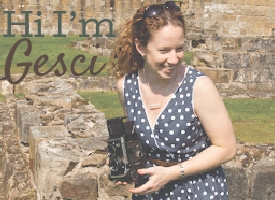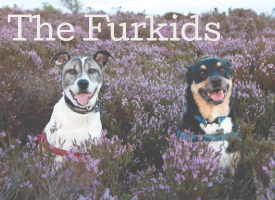I promised you a treat… and hopefully you'll accept this. There are photo tips all over the internet, some technical, some film, some digital, some on camera settings, etc.
I'm sure this is the 4,056,586,801 post on composition tips. But here are some I've gathered from the recesses of my photog brain for you.
Yes, many of these tips can be adjusted for in editing- especially with digital images. However, it's much simpler to just teach your eye to compose within the camera. Cropping can be a great tool when you physically can't get close enough, or your horizon ends up wonky (I swear my face is crooked. It happens.), but if you're relying on cropping for every image, you're not only wasting your time, you're not developing your eye as a photographer. You're also probably not getting the best information to work with in your final image.
I'm going to go ahead and assume you've heard about the Rule of Thirds, and are implementing it.
If you're not, fix that.
You're welcome.
Check for poles/trees/etc. growing out of your subject's head. Or arm. Or thigh. Really, just look around, and shift yourself or your subject to remove anything awkward.
Yes, this picture is dorky, but that's mostly because Sloan declined to cooperate, and she's my model.
Also, yes, I know that this dress/booty combo gives me the general body shape of a gnome, but it's comfy and summery, and I love it. And even though many a strong breeze has offered various parts of Europe some mid-day full moons... I digress.
Don't amputate your subjects. There are certain points that are less disconcerting to cut off a subject- just below a joint (knee/elbow) or just below the natural waist.
See how awkward Max's placement seems? (This is also an example of why the Rule of Thirds is effective.)
Here, he's still cut off at his butt- but there's enough slope of his back that it's much less awkward.
Don't let straight lines bisect your image, vertically or horizontally.
I chose this picture to have printed on a canvas print. This is how they cropped it for the "wrap around." I called the company as soon as I received it and spent about 45 minutes on the phone with a representative who not only agreed that the crop was destructive to the image but she fixed it with me there on the phone, and emailed me the new proof with a mirror panel of the sky and ground used for the wrap. In fact, I was so pleased with her service I'll tell you- it was Canvas on Demand. While I was disappointed with their initial offering, the representative's immediate attention to my dissatisfaction and the prompt replacement really was a credit to the company.
This is my original image- isn't that bit of ground and sky vital?
Create natural visual paths for the viewer's eye to follow.
The images that we are instinctively absorbed into are the ones that keep our eyes moving throughout- notice how the arch of the building and the points of the Falkirk Wheel lead to one another, bringing your eye through the image?
Black and white brings out the best in some images, while color is the best medium for others. The two are NOT interchangeable.
Here's the photog in me coming out, but it drives me nuts when someone posts an album on Facebook or does a blogpost with the same images in color and black and white. First of all, proper black and white takes adjustments and tonal balancing- it is not achieved by just clicking the "black and white" button in Photoshop. I shoot almost all of my film in black and white, as I'm sure you noticed in my "Why I Hold a Camera" series. It helps bring my dog images out of "snapshot" range, and focuses the eye on patterns in my nature shots that otherwise might be overshadowed by vibrant colors. I do shoot digitally in color, as Lightroom allows me the option of moving to B&W but I can't add in color after the fact. Since most of my images now are of our travels to places I might never get another opportunity to photograph, I want all the information available to me.
Each image should be judged individually, if you're wanting to use both formats- for example, in a wedding shoot, B&W can add a timelessness, soften features, and direct attention to the gaze between two newlyweds without competing visual elements. Color, on the other hand, will show the brilliant bouquet, or even make the bride's white dress pop against a colorful background. Each medium has its appropriate use.
While the top image would lose the magic of the stained glass' brilliant projection without color,
here I wanted to concentrate on the lines of architecture- so I opted for black and white.
Here are two images that hopefully show you several of these rules in a wrong/right comparison:
This image feels unwieldy, and the tree trunk bisects the image despite not continuing through the bottom. The heavy ground gives the wall a see-saw feeling, with the tree as its fulcrum. While I'm sure you see the lamb, the image is not pleasing overall.
Here you have the wall and the tree trunk meeting at an angle right at the lamb- so your eye is drawn to him. The tree branches on the top left even direct you in to him. He's on the lower right, which is where I tend to weight my images. An easy way to do this quickly when you're shooting on the fly and can't control your subject is to preset your single focal point to the area YOU are drawn to- some people prefer the left, some the right, some the lower center. If you're going to go with a point in the top half of the image, go for it- it can be harder, but I know photographers that successfully do it, time and again! (I only know of the focal point select working with interchangeable lens cameras- DSLRs, SLRs, etc. If you know of a point-and-shoot that allows this, please comment below!)
Of course, all rules are meant to (and should!) be broken- but, like in most cases, photography "rules" are broken most successfully when the rule itself is mastered first!
Did you like this? Was it useful? Do you disagree with any of the tips? Do you have any questions? I'd love to hear feedback from you, so please leave your comments!!






















great tips - i definitely learned a little more about photography - thanks for sharing!
ReplyDeletelove,
elisabeth
lavitaebella-elisabeth.blogspot.com
Great tips to keep in the back of my mind. I'm not trying to be a professional photographer, but I think quality pictures help build a quality blog.
ReplyDeleteGreat tips! Thank you for sharing. I'm loving taking pictures of our travel but I have no idea what I'm doing. More tips, please!!
ReplyDeleteGreat tips and what a nice blog!
ReplyDeletelove your pics! And your hair! You are SUPER pretty hair!
ReplyDeletehttp://insunshineandshadowsmew.blogspot.com/
This are great tips! So simple!
ReplyDeleteAlso - I looove canvas on demand! When there has been a cropping issue, they've automatically upgraded a size free of charge so as to not degrade the quality of the photo. Love them!
Oooh, yay! I really like this post. I just "liked" it in my Bloglovin' account too! Thanks, Gesci!
ReplyDeleteSascha, thank you so much! Little Lady- thanks, and thanks again! It took me many years and many products, but I've finally come to terms with my hair... I just let it do what it wants and hope for the best when I need it!
ReplyDelete